 |
|
| Issue #117 • May/June, 2009 |
The birds are singing. The sunshine makes the day feel soft and warm. The soil is mellow and damp. It makes us feel like being outdoors and doing something. How about growing a garden this year?
Even if you have never so much as planted a potted flower, I guarantee that with a little enjoyable work, you can raise scrumptious food, right at home.
Or maybe you’ve gardened in the past, and life has kind of swept you along and you’re afraid you’ve forgotten how to garden successfully. Not to worry; I’ll give you a hand and we’ll get that garden planted.
Is it hard? Not a bit. Is it a lot of work? You do have to work at it, but it’s the kind of work that’s satisfying and really fun. There aren’t many things as enjoyable as the excitement of seeing your very first red, ripe tomato on the vine or your first bean plants popping up out of the soil.
Is it complicated? You know: mulch, compost, pH, organic, chemicals, biologic insect controls? No. It isn’t a bit complicated. As you progress, you may want to expand your gardening skills for an even more productive garden. But gardening definitely is not complicated.
Well, isn’t it expensive then? Again, no. Like anything else, you can spend a lot of money gardening. But you don’t have to. In the old days, folks grew tons of food by saving their own seed from year to year, trading seeds with neighbors, and occasionally buying a few packets of seed to grow other crops they didn’t have seed for. In fact, by growing even a modest home garden, you can save up to one third of your grocery bill each week all summer and fall, and even more if you home can your extra vegetables.
Some people think that they need a huge garden to help feed their family. Not so. By gardening wisely, planting crops they usually buyand are expensive, a modest garden will provide a huge amount of food.
With the economy now in a tailspin, I strongly encourage everyone to give gardening a try. By tilling or spading up a plot of lawn in an urban back (or front) yard, you can soon have an attractive, productive food factory.
|
Gardening terms
Compost is well-rotted, crumbly black soil that you get from piling dried lawn clippings (without weed killer applied), leaves, chopped cornstalks, green weeds (without seeds) and other organic material. If you don’t have enough big trees to collect your own leaves, if you just ask your neighbors or even people you don’t know with large trees, you’ll be pleasantly surprised to have them happy to relieve themselves of the chore and expense of bagging the leaves, hauling them curbside, and paying the garbage truck to pick them up. I got trailer loads of leaves this way each fall. People were about fighting to have me take their bags of leaves.
Manure from chickens, goats, rabbits, horses and cattle also makes very good compost. Even if you live in town, many animal owners are very happy to have you haul a trailer load or even a few garbage cans full of old manure away without charge. My friend used to haul two garbage cans of horse manure home every Saturday from a boarding stable a few miles away, then go down a bike trail and cut grass to haul home to dry and add to it, all while going to visit friends or taking a hike. She soon had a great compost pile of rich black homemade soilfree. One caution, though; don’t use dog or cat manure in your compost pile. They could contain parasites or diseases transmissible to humans. While compost breaks down with heat, you don’t know for sure that all of the feces will be heated enough to kill these dangerous organisms.
You don’t need a fancy bin that rotates or is made of plastic. My grandmother had her “compost heap.” All it was was a small bare spot between some trees and the driveway where she religiously piled leaves, seed-free weeds, spent vegetable plants, and horse manure (donated by the junk man and milk man’s horses). She would spade it up a bit and water it when she watered the garden. It made excellent, rich mulch.
Of course, if you enclose your compost pile using a wood pallet fence, or even chicken wire fence, it doesn’t sprawl and is easier to turn on occasion, making the process go faster. But any compost pile will make compost in time. And it’s a good place to get rid of your yard waste without paying to take it to the landfill.
Raised beds are an excellent way to garden in small areas where rows are impractical. Basically, raised beds are vegetable beds where soil is piled up higher than the surrounding walkways. You don’t even really need a border such as boards. But, of course, having boards, blocks, railroad ties, or other material keeps the beds much neater and less prone to erosion.
Raised beds are sometimes the only option when you must garden on exposed rock or where solid rock is only inches below the surface. I had a friend in Canada who had black dirt hauled in to her fire tower cabin via helicopter, one pail at a time because she only had solid rock. Her second year there she had her first great garden. Never say “I can’t because…”
Raised beds provide better drainage for the plant roots, especially when your garden is in a low-lying area, prone to having water standing after rains, or when you have heavy clay soil. (You know you have clay soil when you dig a hole and the soil is dense, smooth, and shiny, and clings to the shovel even after turning the shovel over. Clay can come in red, white, or yellow; all hold moisture, and get very, very hard when it dries out.)
Clay soil is not impossible to “fix.” I had terrible red clay on our first Minnesota homestead. In fact, I had to plow the ground with a tractor to dig my carrots the first year. A shovel wouldn’t turn the soil over. But over the years, I dramatically improved it by working in leaves, rotted compost, manure, leftover vegetable stalks, vines, and plants. In several years it was black, moist, and wonderful.
|
But it takes time. So, if you’re in a hurry to garden, seriously consider raised beds. Even if you have to have a load of black dirt hauled in to fill your beds, you will quickly reap a harvest of great eating. And the beds will be good for years, enriched by annual applications of that good compost you are making out back.
Again, raised beds can be formed by just about any bordering material. I’ve been broke and simply used logs from storm-blown down trees. Sure they rot, but by then, maybe you’ll have a few bucks more and can replace them with railroad ties, rot-resistant cedar, or cement block, even if you can do only one side of your garden a year. But those logs will last a surprisingly long time.
I’ve also scrounged raised bed material from construction sites, curbside on garbage pickup dayswith permission of course, and from neighbors who were doing remodeling. You just need something to hold in dirt; it isn’t rocket science.
It’s nice if you can make your raised beds at least a foot deep; two feet is better and easier for folks with achy backs to handle, as there is less bending and you can sit on the sides while you weed. Oh, did I mention that there’s much less weeding in raised beds? The plants are such close neighbors that their leaves shade out weeds. So if you take good care of your vegetables when they are tiny, they will soon help out by making big leaves, which reduce the number of weeds that germinate.
A standard width for raised beds is about four feet. By keeping them no wider than that, you can reach from both sides to the center in order to weed, plant and harvest without falling into the plants. You may make your beds any length you wish or have room for. They don’t even need to be perfectly rectangular. I have two that have pointy ends, as that’s how they fit into my front yard. The plants don’t care and it looks great. It is a good idea to keep the raised beds far enough apart for walking or maneuvering a wheelbarrow or lawn mower through with ease. You’ll hate it if you make your beds too close and have to move them. Moving them is not fun.
Mulch is just something that you put around your vegetable plants to keep the roots cozy and eliminate weeds at the same time. Mulch also holds that precious moisture around the plants each time it rains or you water your garden, making it available for a longer time to thirsty, growing plants. Mulch can be straw, dried lawn clippings, pine needles, bark chips, or even black or colored plastic you buy in rolls for that purpose. Personally, I prefer organic material over plastic as I like to work the season’s mulch into the soil at the end of the year to enrich the soil. You can’t do that with plastic.
Mulch will speed up your plants’ growth, encourage them to produce heavily, and, by keeping weeds out, it will lessen the competition from these pesky invaders for nutrients in the soil. All this helps the plants grow strong and vibrant which does a whole lot to lessen the impact of insects who drop by to snack on your family’s food. Insects really prefer wimpy, weak plants. The strong plants actually seem to repel these damaging invaders.
Wide rows or wide beds are usually used in raised-bed gardening. But I also use them in my big, ¾-of-an-acre garden, where I grow many of my crops, because they allow for ease of cultivating. No matter what the seed packet says, or what your neighbor says, you don’t have to have a two or three foot space between rows of such crops as carrots, beets, peas, or whatever. It’s often a waste of garden space, especially when you are gardening in a raised bed or have a small to modest-sized garden that you aren’t tilling with a mule or big rototiller.
To save time and to keep weeds down, it’s easy to plant your seeds close enough that the leaves of the half-grown plant just overlap. For carrots this means planting your seeds about an inch apart in rows, and having the rows only a few inches apart. Likewise, such crops as peas, beans, radishes, beets, and turnips all do well using wide rows.
|
I plant pea patches or beds, letting the vines cling to each other for support. Yes, I do have to wade through the vines to harvest the center, but boy what a harvest! And in so little space, too.
In regular garden rows you would space your broccoli or cauliflower about 18 inches apart, with a walkway between rows of about 24 inches. In a raised bed you can use wide-bed or intensive spacing of most varieties, planting them a foot apart each way. You’ll harvest much more from less space this way.
Some crops seem to be meant for raised beds and wide-row plantings, but there are limitations. For instance, growing sweet corn in raised beds can be done for fun, but you’ll get so little return you’ll only get a taste for the table. I prefer to save my beds for more productive crops like broccoli, beans, tomatoes, peppers, cabbage, or bush squash.
Container gardening is getting to be a huge thing with people who don’t have the room for a “regular” garden. And it’s not just a useless fad, either. You can eat a whole lot of food from larger containers, placed in strategic locations around the house or even sky-level apartment. Mix pots of flowers with containers of patio tomatoes, colorful peppers, cauliflower, and green beans. Not only is the effect gorgeous, but makes for great eating all summer. A couple of pots of mixed lettuce will keep your family in weekly salads all spring, summer, and fall. Add some trellises to your containers and you can easily grow pole beans, peas, vining tomatoes, or even melons. With containers you can garden on the patio, porch, driveway, balcony, or even on your roof.
Just remember that, because the sides of the containers are exposed to more heat, container plants need more water than do those in the ground as the sun tends to dry their roots out more. Check your pots often; sometimes they need water everyday. But also make sure the containers have drain holes so they never become soggy. That will rot the plants, killing them quickly.
Your containers can be anything from commercial pots to found materials. I have an old wheelbarrow, three leaky washtubs, an old stock watering tank that leaks, a plastic witches’ pot leftover from someone’s Halloween party, and several leaky tin buckets. Anything that will hold a decent amount of soil can grow your food. Container gardening is sort of mini-raised bed gardening, and can be equally productive. Kids love it too.
Your planting season
Depending on your climate, your planting season can vary greatly. Most of the country is in a moderate planting climate, with four distinct seasons and about 120 to 140 days of frost-free, good gardening time.
But there are exceptions. I live in northern Minnesota where we often have killing frosts as late in the spring as June 15th and early fall freezes as early as August 27th. In other parts of the country they experience scorching, humid heat during the summer that makes growing many crops nearly impossible for them. In those climates, people plant fall and winter gardens while my northern garden lies under four feet of snow.
When considering starting a garden, know your best growing time, the frost free dates, and the time your experienced friends and neighbors plant their gardens. Ask around. You can also go online for this information for your state and area, or you can call your County Extension Office. They also have free booklets on about every subject you could imagine.
Working up your garden
Choose your garden site with care. Gardens need sunshine to be productive. Consider where the sun will shine for much of the day…and where it won’t. A garden on the north side of a large house is often not too productive. Try to stay away from larger trees; their shade, along with roots can make gardening frustrating. Spend an afternoon staking out a possible site; suddenly just the right area will pop out at you.
|
If you will be planting a “traditional” garden (not a raised bed), you first need to work up the soil. If it has not been a garden, it’s best to remove the grass, roots and all. This will help keep the grass, which becomes a weed, out of your newly worked garden. You can use the sod elsewhere to patch worn spots in your lawn, or turn it upside down in your compost pile. By keeping it chopped and worked up, you will prevent it from growing and it will soon start to rot and break down, making good compost for your future gardens.
To remove the sod, cut into blocks and run the shovel under it to lift it off. Stack the blocks in a wheelbarrow or wagon as you go.
If you have some compost or organic material, such as chopped straw, leaves, or dried lawn clippings, sprinkle it liberally on top of your exposed soil. You will need to loosen your garden’s soil by spading it under with a shovel or a spading fork. Hard, compacted soil does not let plant roots penetrate deeply to access nutrients, so they won’t grow as well as if they had a looser soil.
I’ve spaded many a garden by hand and it’s not all that hard. But don’t plan on doing a large garden all in a day or two. It takes time. To do it, you simply step on the top of the shovel’s blade, run it into the soil the full depth of the blade, then rock it back, prying the soil out of the hole. You then toss it upside down back into the hole, loosening it nicely. Do one row, from one end of the garden to the other, then, start back, digging a second row next to the first. Subsequent rows go much easier because the top has already been broken. Continue until you run out of steam and take a break. As you go, pick up any large rocks, roots, or sticks you come upon. Toss them into your wheelbarrow or wagon to dispose of. This will make your future work much easier. That little bit of straw, compost, or pine needles will end up buried under the soil where it will begin breaking down to help improve the ground beneath your feet.
If you don’t finish spading your garden in a day, stop before you are really tired and work on it again the next day…and the next day if you need to. There is no great hurry. Often we tend to plant too early in the year, anyway.
Of course it is easier and faster to use a rototiller to work up your garden soil, especially if it’s a first time spot. You can usually borrow a friend’s, pay a neighbor who has one to till for you, or as a last resort, rent one from a local rental shop. I’ve had one for years now and I often trade working up a neighbor’s garden for something of equal value. It’s not that much work and it’s fun helping others get growing.
There’s no need to buy a tiller of your own until you’re sure that you want to continue gardening and even expand your garden in the future. Most smaller gardens can be handled by hand, once the initial tilling has been done.
Starting your own plants
While many crops can be direct-seeded (planted directly into the ground), some plants take so much time to mature that you need to start them indoors from 8-12 weeks before they can be safely transplanted outdoors in to your garden. The two most common vegetables that you need to consider this with are tomatoes and peppers. Yes, you can simply go to the local nursery and buy a few plants to put in your garden, but many times these are not necessarily the best varieties for your climate and area. Do you need a tomato that is very early and does well in cool temperatures? Or do you need one that will handle high humidity and lots of frying sunshine and still set blooms and make tomatoes for you?
By carefully reading seed catalogs and the backs of seed packages, you will learn how many “days to maturity” a variety requires. When planting seeds this means from when you plant to when you first begin to harvest your vegetables. With tomatoes, peppers, and other plants you bought to transplant into your garden, the “days to maturity” means how many days are required after you transplant them before you begin to harvest their crop.
Look for the traits you need or want, such as “grows in cool soil,” “handles high temperatures well,” or “stands up under wind.” Of course, I always look for the best productivity, taste, and something pretty, too.
If you are going to start some seeds, fill containers at least 2 inches deep, preferably 4 inches, with a good quality seed-starting soil which you can buy from any store with a decent gardening section. (Otherwise, use sifted, well-rotted compost mixed half-and-half with gardening soil.) It’s best to punch small holes for drainage in the bottoms with a nail or other sharp instrument to let excess water drain out. This prevents the seeds or tender young plants from rotting. Water the soil, which is usually quite dry, well. Let it soak in, then carefully place your seeds an inch apart all ways in the container.
You don’t have to plant the whole pack of seeds. Plant what you wish to grow, most of the seeds will germinate, then seal the envelope again and store it in a jar for next year. Seeds stay good for many years. You’ll save money this way.
Next, sprinkle about 1/8 inch of seed-starting soil over the seeds and gently sprinkle warm water over the container, dampening the soil well. You don’t want it heavy and soggy, just nicely moist. Put the container in a used bread bag or white/clear plastic shopping bag and close it with a twist. Tuck the end under the pot and set it in a warm location. Watch the container carefully; tomatoes can germinate in as little as four days…or take two weeks, depending on the temperature. The optimum temperature is around 75°F. Cooler makes things slow down. But too hot can actually cook the seeds, so keep them out of direct sunlight.
Once the plants are up, remove the plastic and place them where they get sunshine for most of the day. Watch out so they don’t dry out, as a sunny window will tend to suck the moisture out of the pot. Once the plants have two sets of true leaves, it’s time to transplant them to a larger container of their own. I find that Styrofoam coffee cups work well for this. Just poke a hole in the bottom of each and fill them with a good potting soil. (Avoid cheap soils, they are solid peat and very dense and acidicand plants don’t like them either.) Plant the seedling as deep as it grew in the original soil, or deeper if it is a leggy tomato plant as it will form roots up the stem, too, making it stronger.
When the plant is several inches tall and growing well, your planting season should be upon you.
|
Your planting schedule
A lot of people think that you plant your whole garden in one afternoon, then you are done. Not so. Some plants, such as peas, carrots, broccoli, cauliflower, beets, and radishes like cool weather and actually slow down or even die in extremely hot spells. They can take a late spring frost, but they can’t take hot summers. Other crops are sun bathers; they love warm weather and don’t grow well when the soil is cold. Sweet corn, beans, melons, squash, tomatoes, okra, and peppers like warm soil and plenty of sunshine.
So to keep all your garden happy, plant first your cool weather lovers: peas, carrots, beets, potatoes, and radishes. Follow with rutabagas, broccoli, cabbage, and cauliflower. Finally, when the soil has warmed up nicely, plant your beans, pumpkins, squash, okra, melons, tomato, and pepper plants.
Being a far-northern gardener, I have such a short growing season that I must tweak things even more. I add a month or more to my short growing season by setting out my tomato and pepper plants extra early, using Wall O’ Water plant protectors (the water-filled tipis). These warm up the soil as well as the plants, protecting them from frosts, freezing (down to 18°F or less), and cold, drying winds.
I also start my muskmelons, watermelons, pumpkins, and squash inside a month before frost-free gardening time, setting out month-old plants that really take off. It makes a huge difference for my harvest.
Plant your radishes in short rows, only a few at a time, every week or so until hot weather. The large, older radishes often get woody and very hot. By planting only what you will eat while they are young and crispy, then planting another small crop a week later, you’ll have tender, young, mild radishes all the way till midsummer. Again, in the fall, as the weather turns cooler, plant more successive crops. They’ll be great till freezing weather arrives.
Likewise, you usually don’t need a “crop” of turnips or lettuce. Plant successive small crops to keep your eating tender and young. It saves garden room, too. You can plant one crop after another, starting out with your cold-lovers, and when they’re done, work up the soil and plant warm season crops that take minimal time, such as green beans. You’ll get more food out of less space.
|
Lay out your garden so that the rows of taller crops don’t shade the shorter ones too much. I plant my sweet corn on the north end of the garden. It gets plenty of sun, but the beans next to it do as well.
Some crops, such as sweet corn, do best with about 24 inches between rows for ease of cultivating with a tiller or walking while hoeing and harvesting. Others, like green beans, do well in double rows. I plant my green bush beans in rows about 8 inches apart, instead of a single row. That way I get twice as much food from just about the same space. If you make a map before you garden you’ll make cultivating later easier.
You can trellis up your cucumbers and even muskmelons to save space. It also keeps them easier to see and harvest. You’ll have straighter cukes, too.
Plant your seeds about four times as deep as the seed is fat. For instance, plant your sweet corn about an inch deep, but carrots with their small seeds, only ½ inch or less. But be sure that those shallowly planted seeds receive enough moisture to keep them damp until they are safely germinated. I think drying out kills more seedlings than everything else combined. Some seeds germinate in a few days, but many take as long as three weeks. Keep them moist and be patient.
Care during the growing season
Once your seeds/plants are established, continue your good care. Thin them if necessary. Don’t put this off. If you don’t thin, you might not get a crop. A million stringy carrots are not good to eat. A hundred fat, shiny ones are delectable.
Be sure your garden gets adequate moisture. If it dries out, your crop will suffer. The soil should retain moisture after watering. A good layer of mulch will ensure this, be it pine needles, straw, chopped dry grass, or even mulch-grade black plastic. Signs of drying include corn leaves that droop, tomatoes that develop a black rotten spot on the blossom end (blossom end rot), or bean vines that yellow early. Using drip irrigation or soaker hoses is a great help, but any form of dependable, regular watering will do the trick.
Don’t let weeds get ahead of you. At first they look so innocent and tiny. But soon they are overtaking your precious vegetables. Cultivate shallowly when the weeds are small, then mulch over the area. Deep cultivation often only makes more weed seeds germinate.
Grass and clover are hard to eliminate, so get it out while it is young and not so much of it. Weeding after watering or after a rain makes pulling out the whole weed much easier. Ripping it apart and leaving the root does little, it’ll be back, stronger than ever. Toss your weeds into a bucket, then lay them out on pavement, the driveway, or somewhere they can’t live. Turn them until they are totally dried out and dead. Then add them to your compost pile with a chuckle. They deserved that!
When your first crops are beginning to mature, keep them picked. That will encourage more flowering and more food production. If you let the first crops get mature (like beans beginning to seed out), the plant will quit making more and slowly die. Keep it in production by keeping it picked.
By now you’re really excited; your garden is coming into full production. Wow! That’s the way Grandma’s tomatoes tasted. Boy, next year, I think I’ll grow a dozen plants so I can make tomato sauce. And maybe I’ll plant more broccoli too. Aha! You’re hooked. Great healthy food, grown by your own hands, right at home. Wasn’t that fun, too? Enjoy!


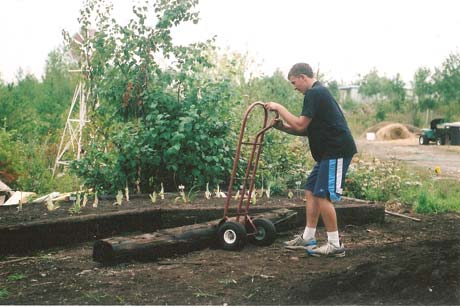












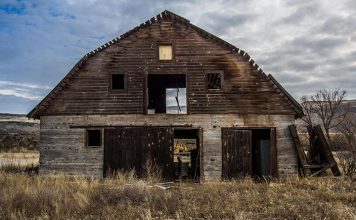


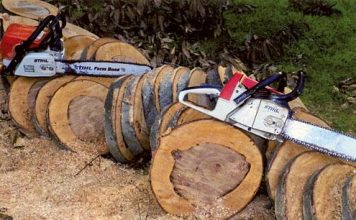
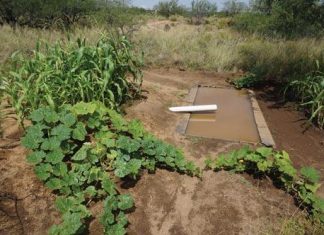
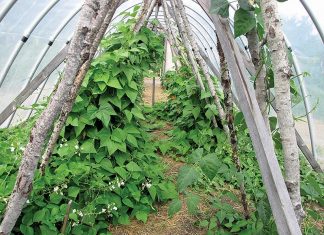
Railway ties are soaked in toxic chemicals so they resist insects etc. Not good as a garden surround